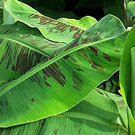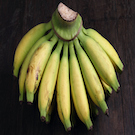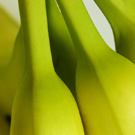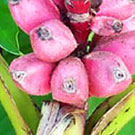Banana Trees for Sale
Willis Orchard Company has a nice selection of fourteen different banana plant varieties to choose from, though it has been reported that there are more than 500 cultivars available worldwide. One of our most popular varieties, the Cavendish, was introduced to the US in the 1950's and has become the export industry standard for bananas. Ornamental and fruiting banana trees grow the best under warm conditions but have been reported to be shade tolerant. The planting site should be chosen carefully for protection from wind and cold weather. Strong winds can play havoc on the banana leaf, often tattering and tearing banana trees badly. Typically the warmest location in the home landscape is near the south or southeast side of the house.
(Click for more)Fruiting Banana Plants
Ornamental Banana Plants
Originating in the Indo-Malaysian region, the popularity of the banana has spread this plant across the globe to every continent except Antarctica. The banana tree plant is one of the largest fruit crops in the world and has been a part of the human diet since pre-recorded history. Banana trees thrive in every humid tropical region of the world but will also adapt to the temperate climates of North America. Some banana plant varieties will even survive temperatures in the single digits.
(Click for more)












